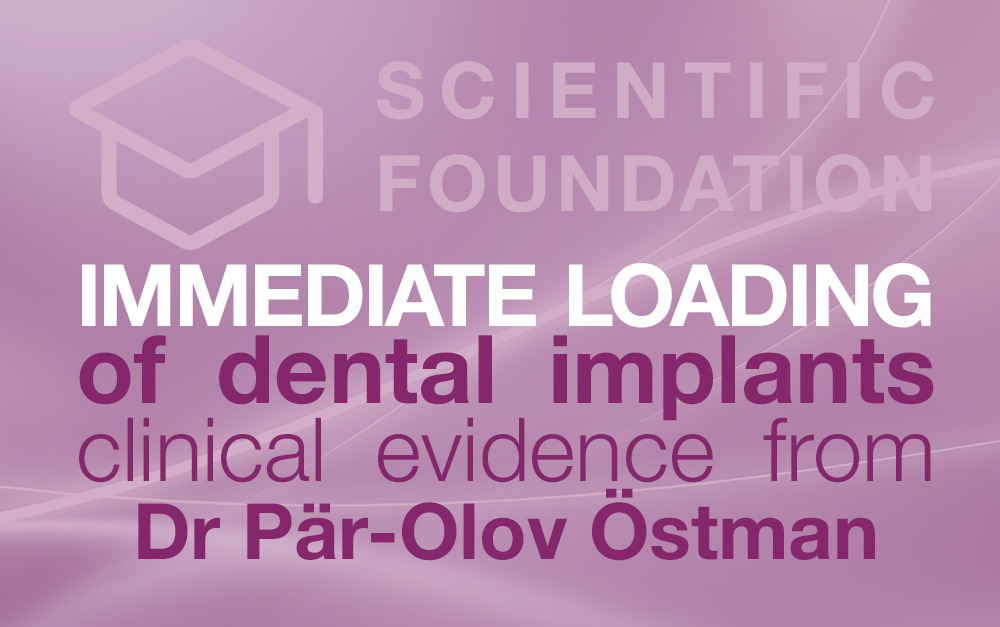
Immediate loading of dental implants – clinical evidence from Dr Pär-Olov Östman
Sep 23, 2025
In a comprehensive doctoral thesis defended at the University of Gothenburg, Dr Pär-Olov Östman investigated various protocols for the immediate loading of dental implants. The research, conducted in a private clinical setting, offers valuable insights into how implant stability and loading strategies can be optimised for improved patient outcomes.
Background and purpose
Traditional implant protocols often involve a healing period of 3–6 months before prosthetic loading. Dr Östman’s work challenges this approach by exploring immediate loading, where implants are restored with provisional crowns or bridges within hours of placement. The potential benefits include:
- Reduced treatment time
- Improved patient comfort and aesthetics
- Biological advantages such as faster bone and soft tissue healing
- Reduced marginal bone resorption
The thesis comprises five clinical studies and an appendix, each addressing different aspects of immediate loading.
Key Findings
- Study I: Temporary implants were used to support provisional bridges while permanent implants healed undisturbed. No adverse effects were observed on the permanent implants.
- Study II: Resonance Frequency Analysis (RFA) was used to assess primary stability in 905 implants. ISQ > 60 was considered sufficient for immediate loading. 85% of implants met this criterion.
- Study III & IV: Immediate loading in partially and fully edentulous jaws showed high survival rates (CSR >98%) and minimal bone resorption after one year. Oxidised implants performed slightly better than machined ones.
- Study V: One-piece implants (NobelDirect and NobelPerfect) showed higher marginal bone loss and lower success rates compared to two-piece implants. Aesthetic outcomes were also less favourable.
- Appendix: The QuickBridge technique for provisional bridges was evaluated in 37 patients. No implant failures occurred during the observation period.
Conclusion
Immediate loading of dental implants is a viable and effective treatment option when high primary stability is achieved. The use of RFA and ISQ values provides a reliable method for assessing implant readiness. However, implant design and surgical technique remain critical factors, especially in cases involving softer bone.
Dr Östman’s research supports the clinical relevance of ISQ measurements and highlights the importance of evidence-based protocols in modern implant dentistry.
The five full studies:
- I) Östman PO, Hellman M, Nilson H, Ericsson I.
Provisional implants: a clinical prospective study in 45 patients, from implant placement to delivery of the final bridge.
Clin Implant Dent Relat Res 2004; 6: 142-9. - II) Östman PO, Hellman M, Wendelhag I, Sennerby L.
Resonance frequency analysis measurements of implants at placement surgery.
Int J Prosthodont 2006; 19: 77-83. - III) Östman PO, Hellman M, Sennerby L.
Immediate occlusal loading of implants in the partially edentate mandible. A prospective 1-year radiographic and 4-year clinical study.
In press, Int J Oral Maxillofac Implants. 008 Mar-Apr;23(2):315-22 - IV) Östman PO, Hellman M, Sennerby L.
Direct implant loading in the edentulous maxilla using a bone density-adapted surgical protocol and primary implant stability criteria for inclusion.
Clin Implant Dent Relat Res 2005; 7 Suppl 1: S60-9. - V) Östman PO, Hellman M, Albrektsson T, Sennerby L.
Direct loading of Nobel Direct and Nobel Perfect one-piece implants: a 1-year prospective clinical and radiographic study.
Clin Oral Impl Res 18; 2007: 409-41.

Add comment